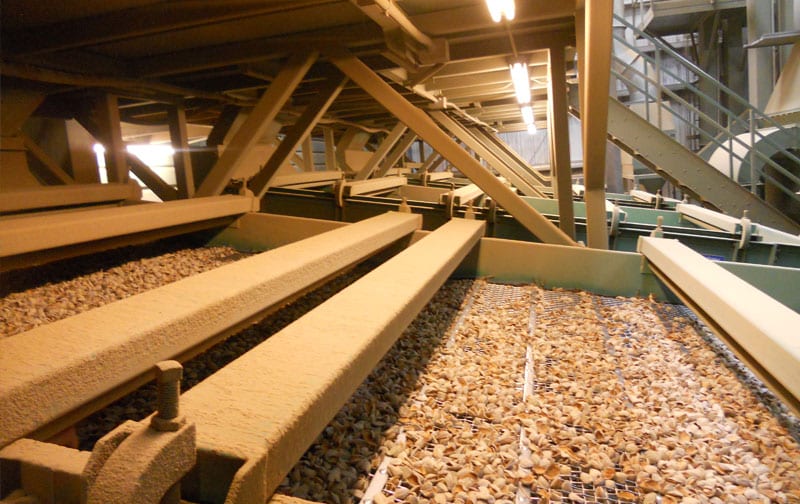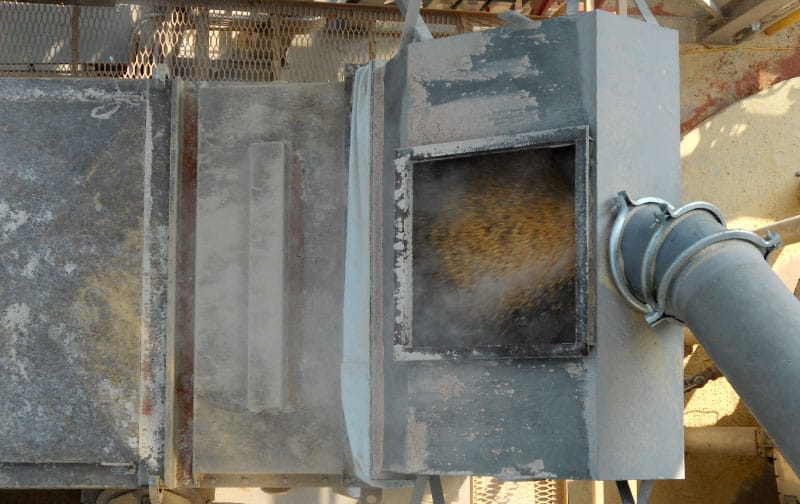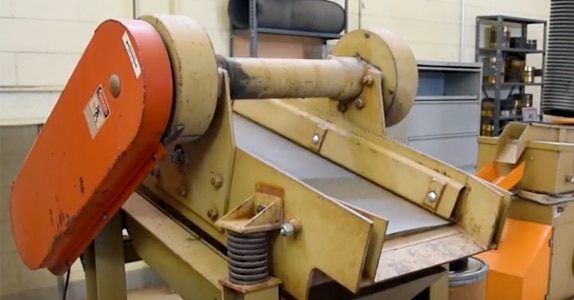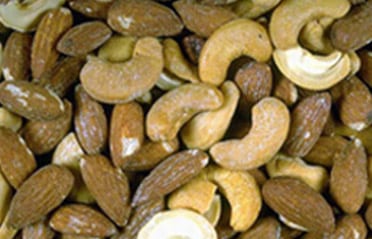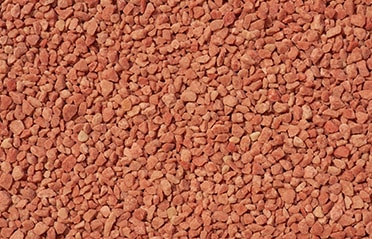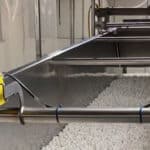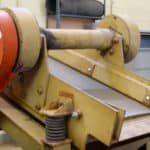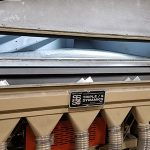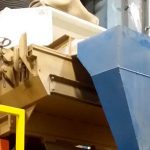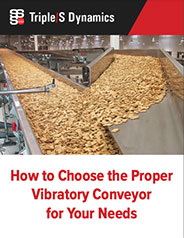Screening Out Fines From PET Flakes...
Texas Shaker Vibratory Screeners
The Texas Shaker is designed for precision screening and sizing of dry granular materials in aperture ranges from approximately 1 ½” to 300 microns. Its long stroke, slow-speed horizontal reciprocating motion promotes rapid stratification, and constantly changing velocities yield the highest throughput of undersize per cycle. It is available in arrangements for 1-4 cutpoints in one machine.
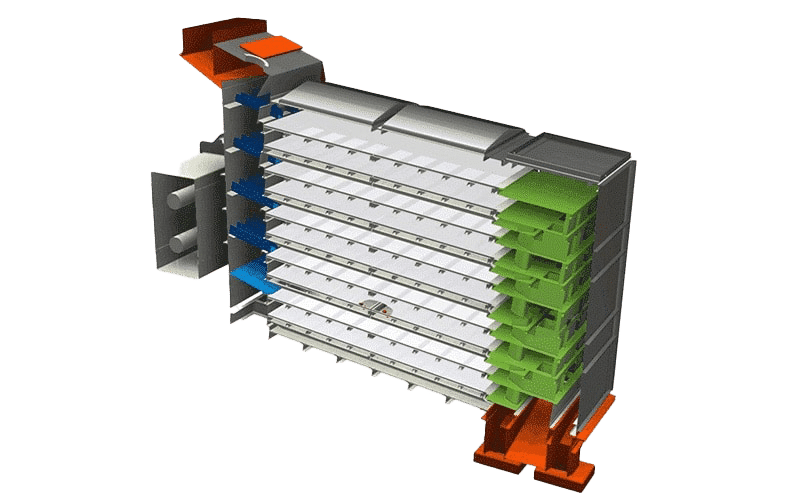
Texas Shaker Models & Sizes
Texas Shaker models are offered in sizes ranging from a 3’ x 6’ single-deck to 8’x 10’ ten-deck, providing up to 800 square feet of screening area in a single machine. Each model is equipped with a vibrator module sized according to its weight for long, trouble-free life, with bearings that range in size from 40 to 200 mm.
Form / Function
The straight-line “shake” of the Texas Shaker is generated by a pair of rotating unbalanced shafts, coupled together with a pair of gears. Their opposite rotation generates the straight-line inertia force which, applied to the screen box structure, causes it to move in reaction.
The constant change in velocity and direction of the screening surface creates a shuffling effect in the material bed that promotes stratification and screening. It also intensifies the action of the cleaning balls, whose impact against the underside of the screen not only prevents blinding, but also applies local agitation to assist in stratification and the screening efficiency by helping undersize particles to migrate down to the screen cloth.
The positive conveying action (40 fpm on 6 degree slope) moves the oversize bed at constant velocity preventing uneven buildup on the screen. Rotors and gears are mounted in a modular housing that spans the full width of the screen box to which it is attached. There is no compromise with quality in the design of the vibrator module. Rotors are machined from solid, hardened alloy steel forgings and carried in spherical roller bearings designed for vibrating duty. These bearings are mounted in individually removable steel housings, for ease in removal and replacement.
The external mounting affords easy access for inspection or maintenance, it also allows the complete module to be quickly removed to a clean shop environment when maintenance is required, or to be replaced with a spare.
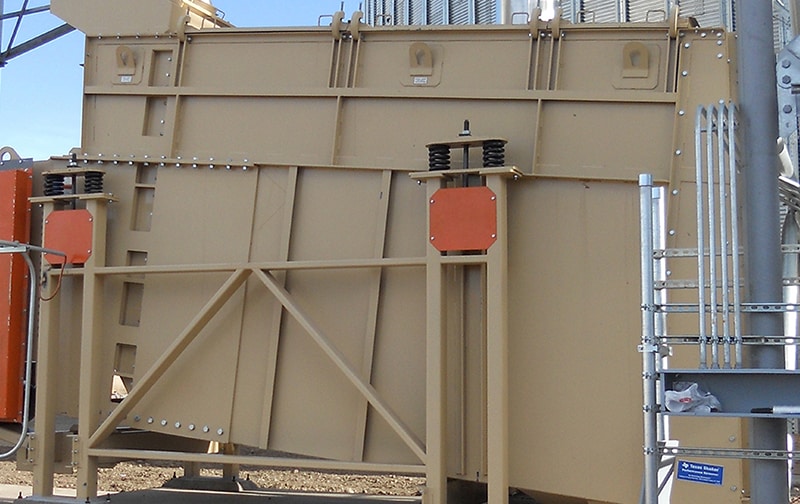
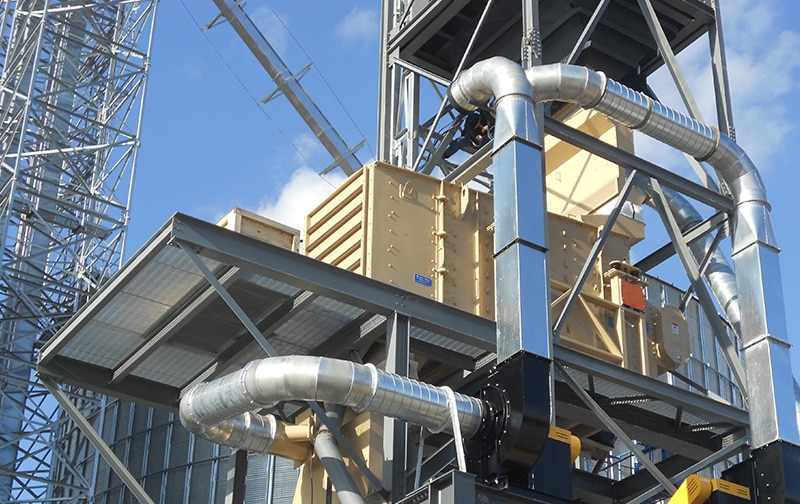
Configurations
In “series” configuration, these deck panels are stacked one above the other, and retrained in vertical and horizontal directions by covers and axial clamps. Incoming feed is delivered through the feed box to the top deck, and separated fractions are discharged through individual chutes.
In multiple-deck “parallel” models, the screens are separated alternatively by carrying pans for undersize. In series/parallel” models, groups of two or three decks in “series” are separated by carrying pans for undersize.
The incoming feed is introduced as a waterfall, intercepted by sets of channels that deliver an equal proportion to each deck (parallel) or set of decks (series/parallel). The separated fractions from each screen deck are brought together in a discharge module which delivers each combined fraction to a separate discharge chute. Either of these arrangements allows for the addition of a single course scalping deck.
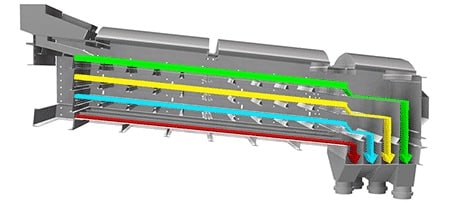
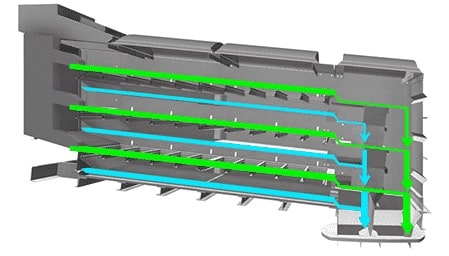
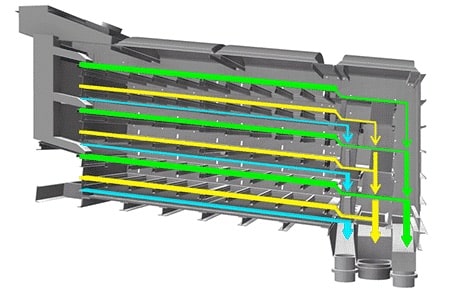
Standard Model
The standard Texas Shaker screen box is an all-steel enclosure, covered and dust-tight except for the feed and discharge openings. Screen cloth or perforated plate is riveted to steel “ball racks”. Balls, which may be gum rubber or polyurethane for ambient temperatures and silicone or spring steel wire-wound for elevated temperatures, are contained within boundaries about 12” square and supported on an open, rough-surfaced steel wire mesh. Ball racks are made the width of the screen box and half the length, installed in sets of two per deck level.
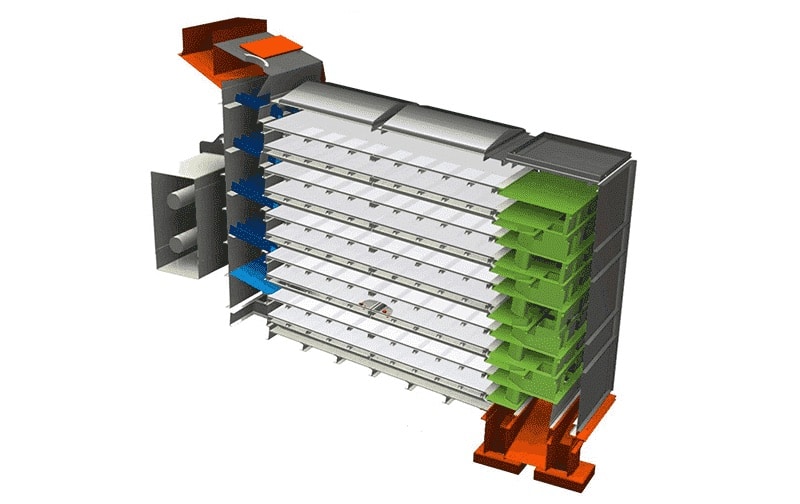
Quick-Change Model
The “QC” model combines the screen box of the standard with individually secured screen decks for easier access when frequent screen changes are needed. QC models are available in widths from three feet to eight feet in series, parallel or series/parallel configurations. In parallel and series/parallel models, integral carrying pans for delivering undersize fractions to the collecting chutes are attached to the ball rack frames. Any one level can be separately removed and replaced, without disturbing the others. In box widths up to and including six feet, the ball racks are the width of the box and half the length. In the eight foot widths, the racks are half the width and half the length, with four separate racks per deck level.
Balls, which may be gum rubber or polyurethane for ambient temperatures and silicone or spring steel wire-wound for elevated temperatures, are contained within boundaries about 12” square and supported on an open, rough-surfaced steel wire mesh.
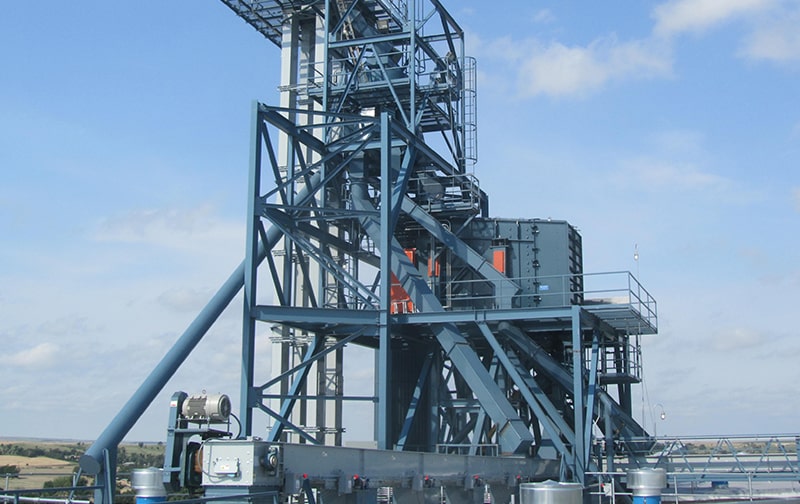
Applications
- Almonds and nuts
- Ammonium Sulfate
- Animal Feed
- Barley
- Beans
- Biomass Pellets
- Catofin Catalyst
- Corn
- Crushed Limestone
- Feed Pellets
- Flax Seed
- Meals
- Langbeinite
- Pet Foods
- Potash
- Potassium Sulfate
- Pumice
- Rice
- Salt
- Sand
- Seeds
- Soybeans
- Wheat
- Wood chips
